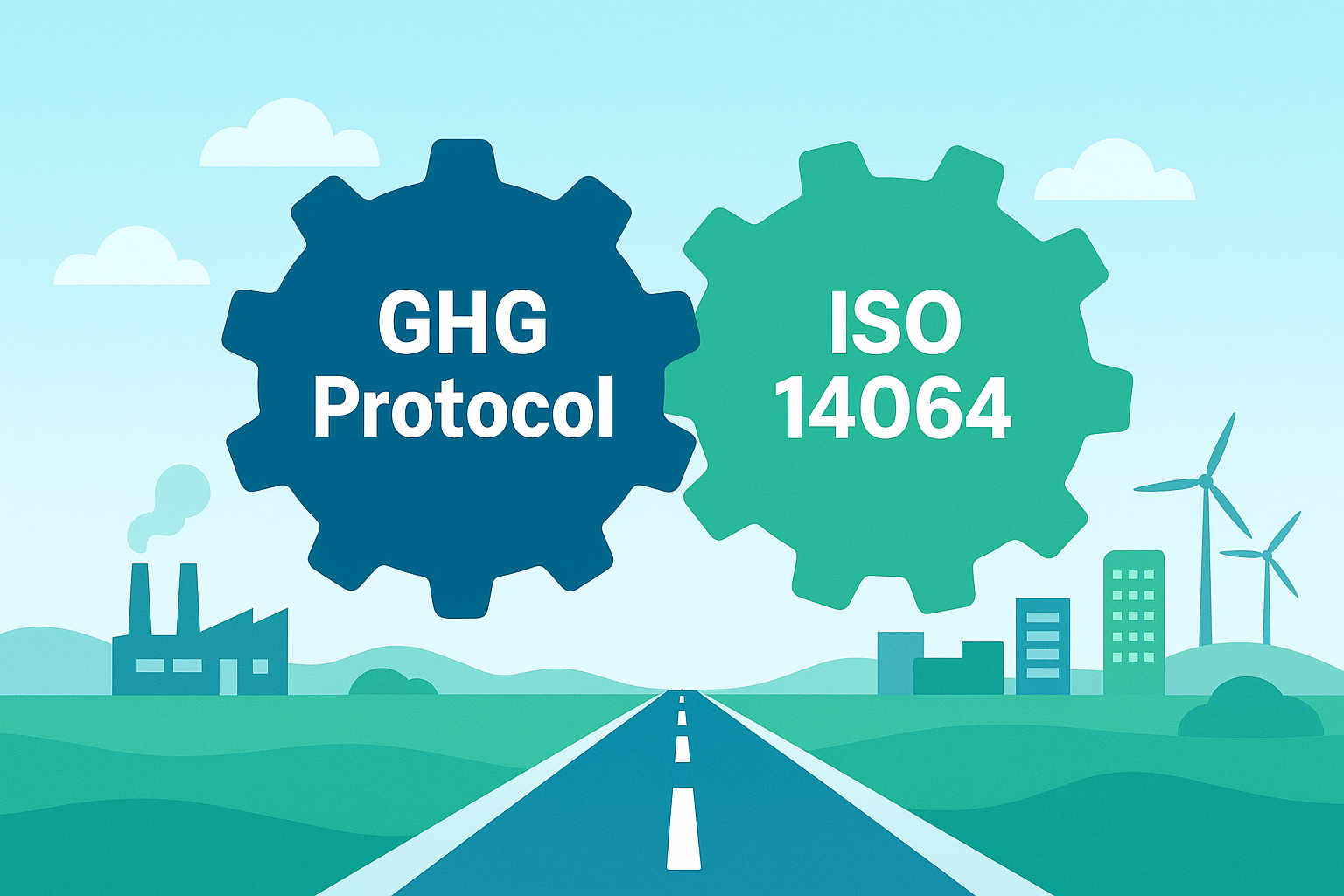GHG Protocol and ISO Merger: What a Unified Carbon Standard Means for SMEs
The world of sustainability reporting is shifting, and for Small and Mid-sized Enterprises (SMEs), keeping up can feel overwhelming. If terms like GHG Protocol and ISO 14064 are part of your vocabulary—or your worry-list—you need to know about a major change on the horizon.
In a move set to redefine corporate carbon accounting, the two leading frameworks—the GHG Protocol and the ISO 14064 standard—are officially merging to create a single, unified global standard.
For sustainability consultants like us, and for our SME clients, this is a pivotal moment. Here we break down what this merger means, analyze the potential benefits and challenges, and provide actionable steps your business can take today to prepare for tomorrow’s standards.
Why This Merger Matters for SMEs
For years, SMEs have been caught between two giants:
The GHG Protocol, developed by WRI and WBCSD, is the de facto global standard for greenhouse gas accounting. It's the foundation for frameworks like CDP and is most commonly used for public reporting.
ISO 14064 is an international guideline that provides specifications for verification and validation. It’s often sought for its rigorous process, and for being part of the ISO family.
Choosing between building a GHG Protocol-based inventory or pursuing an ISO system has been a common dilemma. This merger aims to end that confusion, creating one universal language for carbon accounting. This is excellent news for SMEs, who often lack the resources to navigate multiple complex frameworks.
Analysis: The PROs and CONs of a Unified Standard
While the final details of the merged standard are still in development, we can already foresee the significant impacts. Here’s a balanced look at the potential advantages and challenges for businesses like yours.
PROs ✅
Simplification & Clarity: One core standard to learn, implement, and report against. This reduces training time and complexity, a major win for lean SME teams.
Global Consistency & Trust: A universal methodology enhances the comparability and credibility of emissions data for investors, customers, and regulators worldwide.
Streamlined Certification: Built-in alignment with an ISO-type process could make third-party verification and certification more straightforward and potentially less costly.
Easier Supply Chain Management: Simplifies the process of requesting, collecting, and processing Scope 3 emissions data from your own suppliers, a common pain point.
CONs ❌
Transition Challenges: Existing carbon accounting systems and processes may need to be updated or adapted to comply with the new unified standard, requiring an investment of time and resources.
Uncertainty During Development: The final specification is still TBD. This ambiguity may cause some businesses to pause their sustainability initiatives, which is a mistake.
Risk of Added Complexity: There is a possibility that the new standard incorporates more complex elements from both frameworks, though the stated goal is simplification.
What Should Your SME Do Now? 3 Actionable Steps
While we await the final unified standard, the worst thing an SME can do is nothing. The core principles of carbon management will not change. Here’s how to build a future-proof foundation:
Start Measuring with the GHG Protocol Now: The new standard will undoubtedly build upon the foundational principles of the GHG Protocol. Begin your journey by measuring your Scope 1 and 2 emissions using established GHG Protocol guidance. This data will be invaluable and easily adaptable later.
Engage Your Value Chain: Start conversations with your key suppliers about their emissions (your Scope 3). Building these relationships and data collection processes is complex and time-consuming; starting now gives you a significant head start.
Focus on Reduction, Not Just Reporting: Remember, the ultimate goal is to reduce your environmental impact. Use the data you collect to identify hot spots and implement energy efficiency projects, sustainable sourcing policies, and waste reduction programs. Action speaks louder than any report.
Conclusion: A Step Towards a Simpler, More Credible Future
The merger of the GHG Protocol and ISO 14064 is a definitive step towards a more coherent and effective global sustainability landscape. For SMEs, the long-term benefits of a simplified, credible system far outweigh the short-term transition challenges.
By taking proactive steps now to understand your carbon footprint, you are not just preparing for a new standard—you are future-proofing your business, enhancing your brand reputation, and building resilience against evolving regulations.
Ready to build a carbon accounting strategy that prepares you for the future?
We specialize in helping SMEs navigate sustainability complexity with practical, actionable solutions. Contact us today for a free consultation to discuss how we can help you measure, manage, and reduce your carbon emissions


